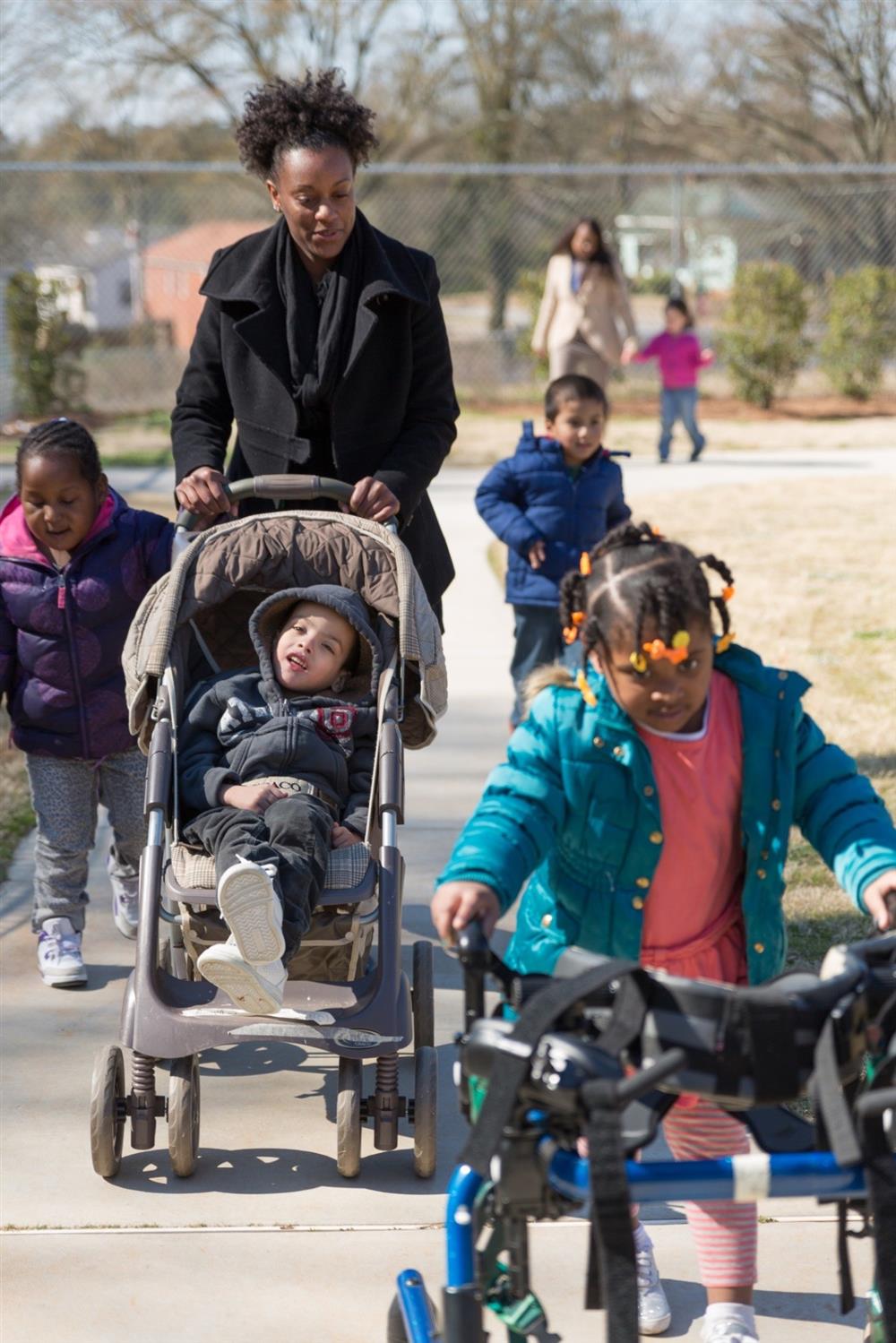Promoting school readiness and a head start for all
- Solution
- HEAD START PROGRAMME OF 1965
- Organization
- US Department of Health and Human Services
- Country of Implementation
- United States of America
- Region
- North America
- First published
- 31.01.2016

Solution details
People
“I’m a Head Start kid. And thanks to an excellent teacher, Mrs. Pack, I did get a head start. I learned to love learning, and that love has stayed with me my whole life. That’s a foundation that all children can have.” Sylvia Mathews Burwell, 22nd Secretary of Health & Human Services (HHS), United States of America
During the transition from pre-school to elementary school, children in low-income families are often disadvantaged, especially those with disabilities. Shortly after its launch in 1965, Head Start was expanded to a year-round programme. Since 1972 at least 10% of enrolment opportunities had to be reserved for children with disabilities. In 1994, Early Head Start was introduced, servicing children aged 0 to 3. The Improving Head Start for School Readiness Act of 2007 reauthorized the programme and required that at least 10 percent of enrolees are children with disabilities and that specific provisions be provided to support them with high-quality early learning opportunities. Since 2009 the Head Start Performance Standards have provided additional requirements applicable to both the Head Start and Early Head Start programmes. The Head Start programme was founded in 1965, was expanded in 1981, and was reauthorized in 2007. It is the largest federal programme to deliver high-quality early learning opportunities to low- income children under five, founded on the idea that every child deserves the chance to reach his or her full potential. The programme provides comprehensive early childhood education, health, nutrition, and parent involvement services. Since 1972 the programme had been required to reserve at least 10% of its enrolment opportunities for children with disabilities, with more specific requirements implemented as of 2007.
Problems Targeted
Early childhood is the most critical phase of a child’s development. The USA’s Head Start programme, which promotes school readiness of children under five from mainly low-income families, is required to offer inclusive early childhood services and, since 2007, is mandated to ensure that at least 10% of enrolees are children with disabilities.
Solution, Innovation and Impact
The USA’s Head Start Programme is a national legally-binding policy that promotes school readiness of children under five from mainly low-income families. While Head Start serves pre-school children, Early Head Start serves infants, toddlers, and pregnant women. Based on the “whole child philosophy,” it comprises education, health, social, nutrition, as well as parental involvement services. Services are provided by a large variety of agencies (public, private, non-profit, and for- profit) to which federal grants are awarded directly. Since 2007 quality improvements have included a broader definition of disability, more accessible physical environments, stricter enrolment procedures, and better monitoring. Since 2009 grantees are required to develop a disabilities service plan, to actively recruit children with disabilities, to complete health and developmental screenings, and to create an individualized education programme for every child with a disability. Equal opportunity for all Head Start pioneered solutions to fight the effects of poverty and to build ladders of opportunity by empowering children and their families to foster positive parent-child relationships, to reach for economic and family stability, and to make connections to their peers and their communities. _x000D_Early identification Head Start’s emphasis on providing developmental and health screenings helps to identify disabilities. _x000D_ Active recruitment Head Start programmes actively recruit children with disabilities while also addressing the critical area of health and mental health. As of 2015, Head Start has operated for 50 years. Today, all 50 U.S. states sponsor additional child care services and the majority of states sponsor pre-kindergarten programmes. _x000D_ Attendees of high-quality pre-schools – including Head Start enrolees – are less likely to need special education. Children enrolled in Early Head Start were more likely to receive early intervention services for children with disabilities than comparable children not enrolled in the programme.
Funding, Outlook and Transferability
In 2014 the total costs for Head Start and Early Head Start was approximately $8.6 billion, an increase of $1 billion since the programme’s reauthorization in 2007. In 2015 a joint U.S. Policy Statement on the Inclusion of Children with Disabilities in Early Childhood Programmes highlighted Head Start’s role as a fully inclusive early childhood programme offering comprehensive services. The Office of Head Start frequently hosts visiting delegations from other countries – recently from Australia, India, and Singapore.
Media
Related information
- Connections
- 1
-
Organization